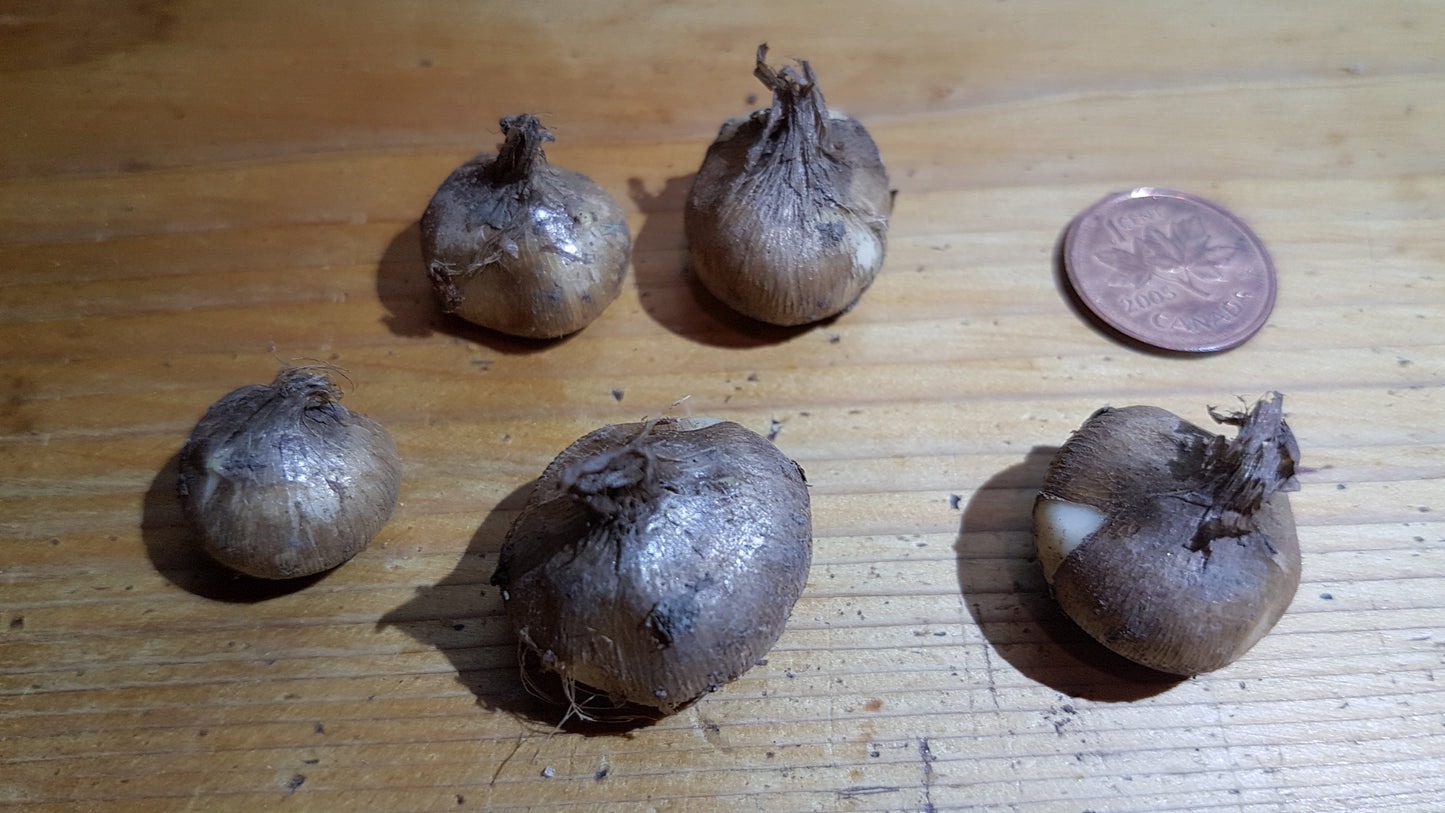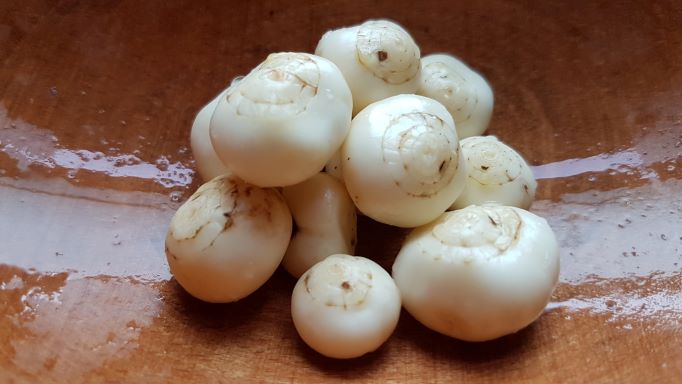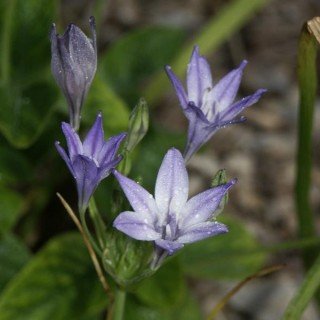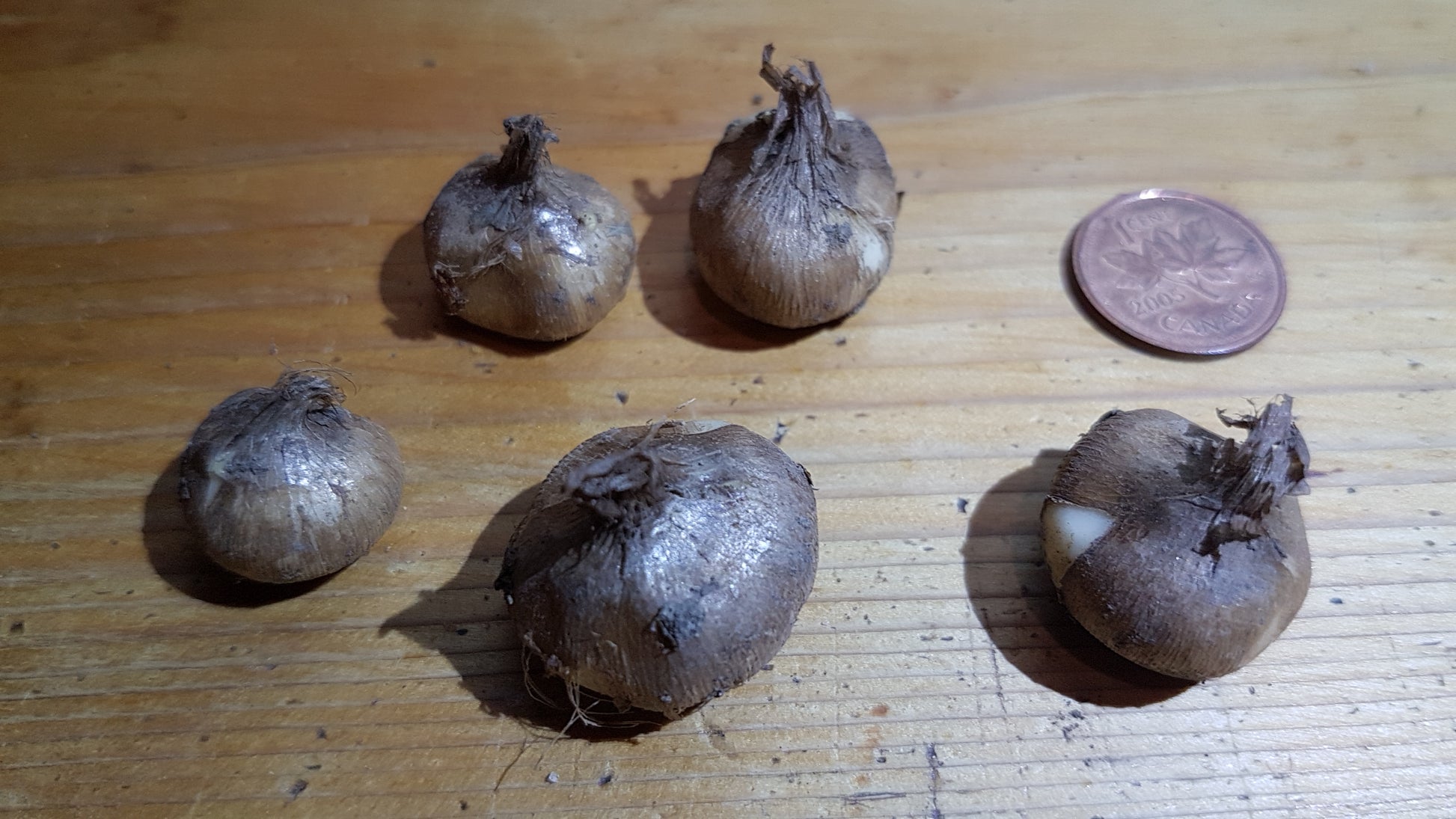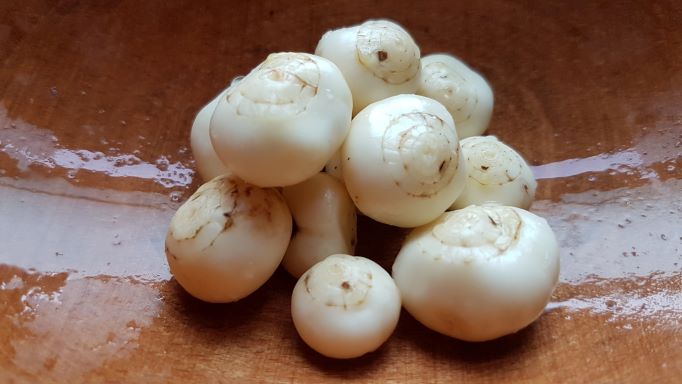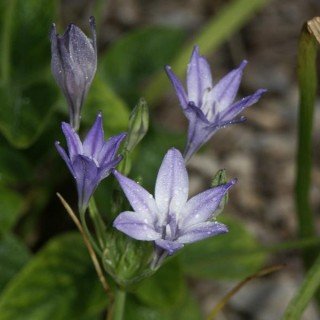Grassnut - Triteleia laxa
Grassnut - Triteleia laxa
Couldn't load pickup availability
Triteleia laxa, also known as Grassnut, is a close cousin of Ookow (Dichelostemma congestum), and both produce large numbers of small bulbs (technically corms). It’s also a prolific bloomer of beautiful blue to purple flowers, grows in a variety of conditions, and is easy to please. Unlike many other wild edibles, the bulbs are easy to prepare, delicious to eat and plentiful. They are on the small side, but their abundance makes up for that.
Cultivation: Easy to grow in the right conditions: sandy or heavier soil, lots of organic matter, full sun, kept moist in the spring and early summer, then dry when it goes dormant. It also produces abundant seeds, which will help the adventurous gardener select different varieties. Ours is a combination of collected seeds, horticultural varieties (the Queen Fabiola sometimes available in stores), and wilds bulbs (from nurseries), to maximize genetic potential. We’ve cultivated ours for several years of trial and error, and the ones we have now are hardy to zone 4, perhaps higher. Be sure to plant deep enough (10 cm seems to work) to prevent voles and other rodents from raiding your beds.
Food preparation: One of the easiest to harvest, prepare, and cook of the plants we carry: the bulbs come out of the ground mostly clean, and only need to be lightly scrubbed under cold water to remove the thin tunic (the paper-like covering of a bulb or corm) to expose an almost pure white bulb (see picture). They can then be cooked like potatoes or any similar root vegetable and have a neutral, pleasant taste. They’re cooked in about 10 minutes and are a great addition to a stew, for instance.
Ethnobotany: Widely used as food by indigenous people of Western North America, such as the Pomo and Kashaya (Moerman, 2012:569). It was usually roasted in hot ashes or boiled. The beautiful flowers were also used for ceremonial purposes.
Share
